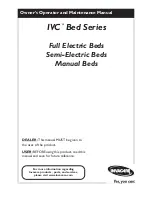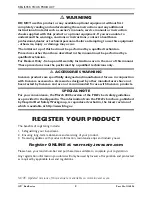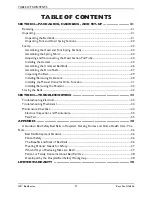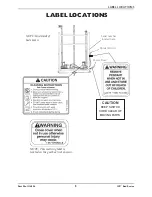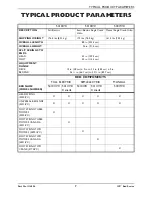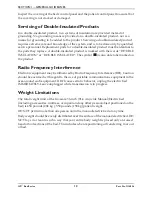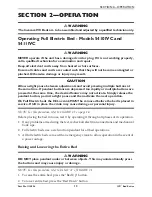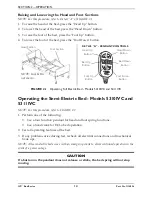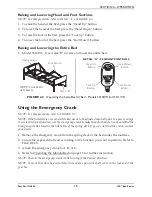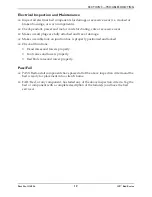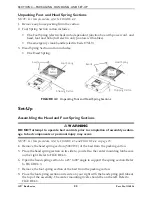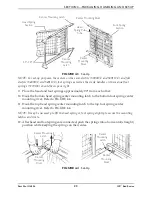
SECTION 1—GENERAL GUIDELINES
Part No 1114836
9
IVC
™
Bed Series
If the unit is not working properly, call a qualified technician to examine the unit and
repair it.
Keep all moving parts, including the main frame, mattress deck (head and foot
springs/sections) and all drive shafts, free of obstruction (i.e. blankets/sheets, heating
blankets/pads, tubing, wiring, etc. and other types of products using electric cords which
may get tangled around the bed, side rails or legs) during operation of the manual/electric
bed.
The manual/electric bed is equipped with locking casters. When transferring into or out
of the manual/electric bed, always lock the locking caster(s). Inspect the wheel locks for
correct locking action before actual use. Even with casters properly locked, some flooring
surfaces such as tile or wood, will allow the bed to move under some conditions. Use on
surfaces such as these must be evaluated by the care provider.
ALWAYS remove manual crank(s) before performing electronic functions. Otherwise, the
crank(s) will turn when the motor is on and could cause personal injury or damage to the
bed.
ENTRAPMENT WARNING
Proper patient assessment and monitoring, and proper maintenance and use of
equipment is required to reduce the risk of entrapment. Variations in bed rail
dimensions, and mattress thickness, size or density could increase the risk of
entrapment. Visit the FDA website at http://www.fda.gov to learn about the risks of
entrapment. Review “A Guide to Bed Safety”, published by the Hospital Bed Safety
Workgroup, located at www.invacare.com. Use the link located under each bed rail
product entry to access this bed safety guide.
Refer to the owners manuals for beds and rails for additional product and safety
information.
After any adjustments, repair or service and before use, make sure all attaching
hardware is tightened securely. Assist rails with dimensions different from the
original equipment supplied or specified by the bed manufacturer may not be
interchangeable and may result in entrapment or other injury.
Mattress MUST fit bed frame and assist rails snugly to reduce the risk of entrap-
ment.
Replacement Parts/Accessories
Possible fire hazard when used with oxygen administering equipment other than nasal or
masked type.
Use masked or nasal type oxygen administering equipment only in conjunction with the
manual/electric bed. The use of any other type of oxygen administering equipment can
result in a fire hazard.
When using nasal or masked type oxygen administering equipment, the oxygen or air
tubing MUST be routed and secured properly to ensure that the tubing does not become
entangled and/or severed during normal operation of manual/electric bed.

